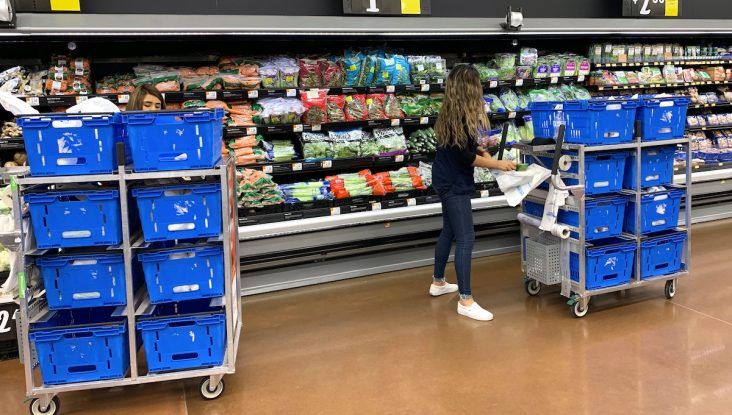Report: Higher-income households fuel Walmart’s growth
by October 10, 2024 11:39 am 1,110 views

Execs with Bentonville-based Walmart have in recent years often said they are reaching more affluent consumers who found them during the COVID-19 pandemic and have become regular omnichannel shoppers.
Walmart CEO Doug McMillon has said all income levels are buying grocery and consumables at Walmart, but higher-income households are also boosting marketplace sales – third-party sellers on the Walmart website – and non-discretionary sales which help the company’s revenue and earnings. He said Walmart is not chasing higher-income shoppers but lower prices appeal also to higher-income shoppers.
A new report from Brick Meets Click/Mercatus Group indicates Walmart’s e-grocery growth through the first half of 2024 is largely attributed to households earning more than $200,000 annually. The report said Walmart’s affluent customer base grew almost five times faster than its average monthly active users. This segment spends 1.5 times more monthly than lower-income households, making them a target for online grocery retailers.
Mercatus said the shift signals the so-called “flight to value” that is not limited to lower-income shoppers. Compared to discount competitors, supermarkets and Target, Walmart also has a larger percentage of customers with households below $50,000 annually.
The report found Walmart’s competitors are losing ground as supermarkets, hard discounters and Target each have posted declines in sales with higher-income households in the first half of 2024.
“For example, while Walmart saw a surge in its average order value with affluent shoppers to $119 (a 40% increase year-over-year), Supermarkets and other competitors faced a more challenging landscape, Regional grocers risk losing more business driven by affluent customers to Walmart if they don’t effectively address shifting expectations of personalized promotions, high-end product offering and a convenience digital experience,” noted Mark Fairhurst, chief growth officer at Mercatus.
Walmart saw a slight increase in its online grocery order frequency in the first half of the year with affluent customers still placing an average of more than two orders per month. Affluent shoppers’ higher average order value makes them a crucial demographic for grocers looking to boost their e-commerce revenue, Mercatus noted. Just one in six Walmart customers also cross-shopped at supermarkets, and this rate declined among two groups – the least and most affluent households.
“This suggests Walmart is capturing a larger share of wallet from the two consumer groups, reducing the likelihood they will turn to other formats,” Fairhurst noted.
The report found that while Walmart continues to retain its base of lower-income households, the cohort is spending less for online groceries as inflationary pressures reduce disposable income. Fairhurst said Walmart’s online grocery sales in the lower-income cohort dipped 6% in the first half of the year, compared to declines of 20% from supermarkets and Target.
“This reduction in spending among lower-income households necessitates grocery retailers to explore creative ways to maintain engagement with this budget-conscious customer segment. Implementing targeted promotions, loyalty programs, and budget-friendly options can help keep these shoppers coming back, even during times of financial strain,” Fairhurst said.
He said to remain competitive, grocery retailers must refine their value proposition to stay relevant in the face of Walmart’s growth influence.
“As competition heats up, grocery retailers need to sharpen their strategies and focus on building stronger, more personalized relationships with both affluent and lower-income shoppers to remain competitive in this evolving market,” Fairhurst said.
